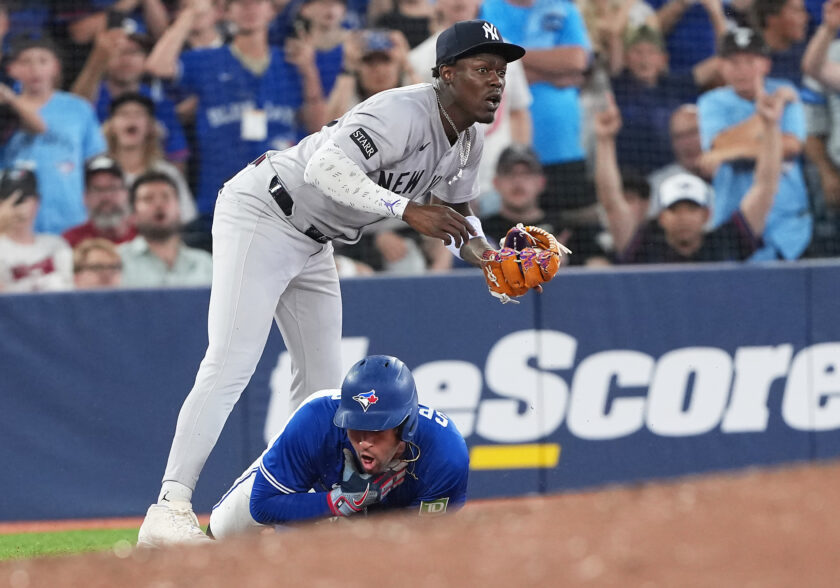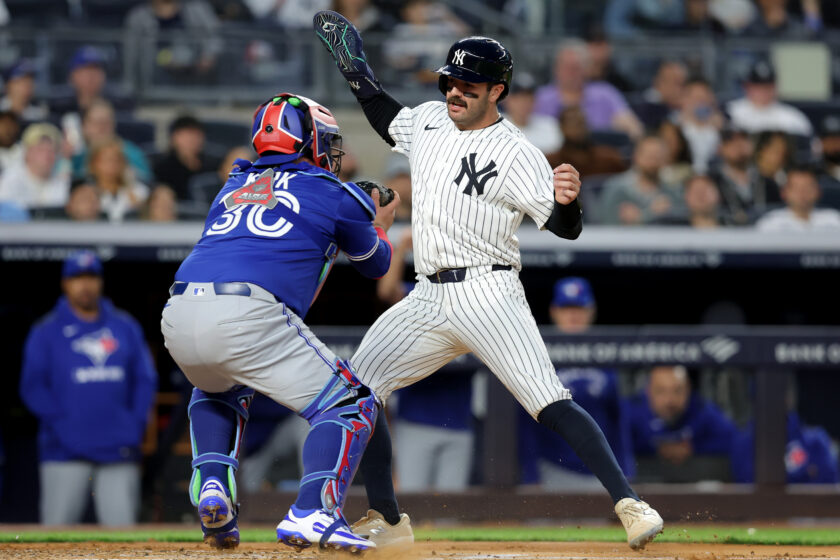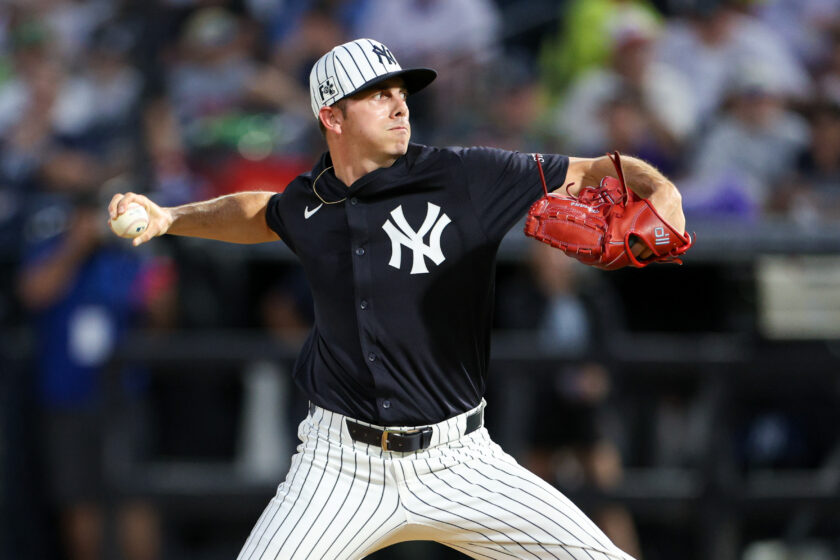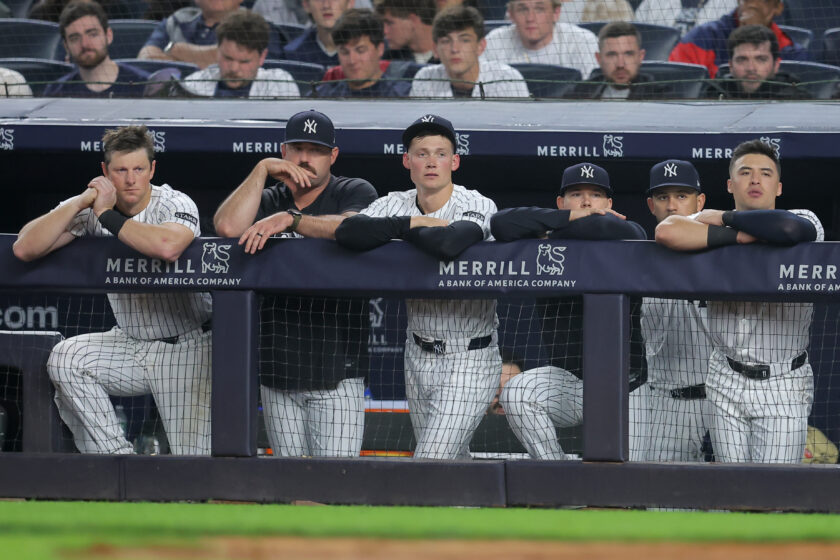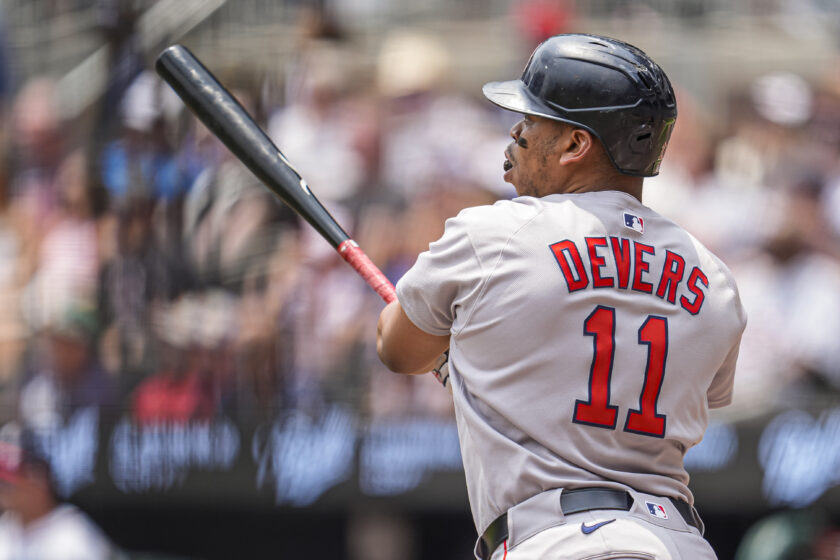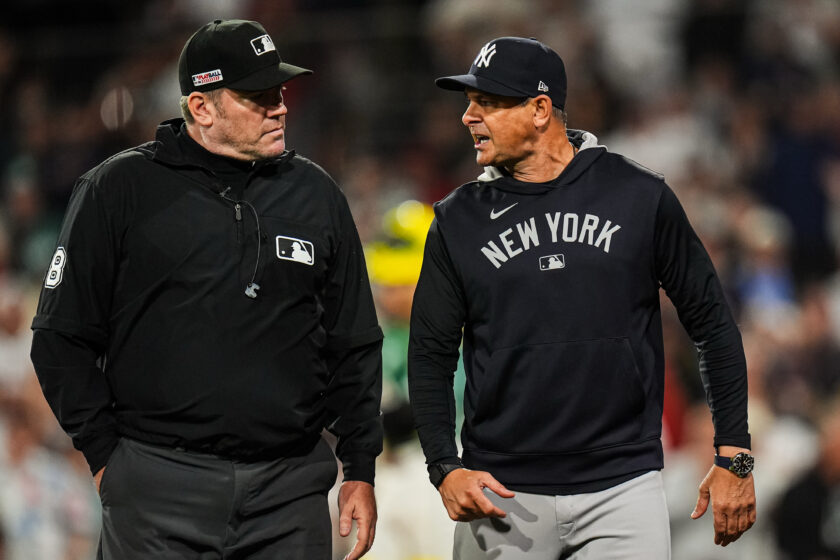New York Yankees: Putting together the All-Obscure team
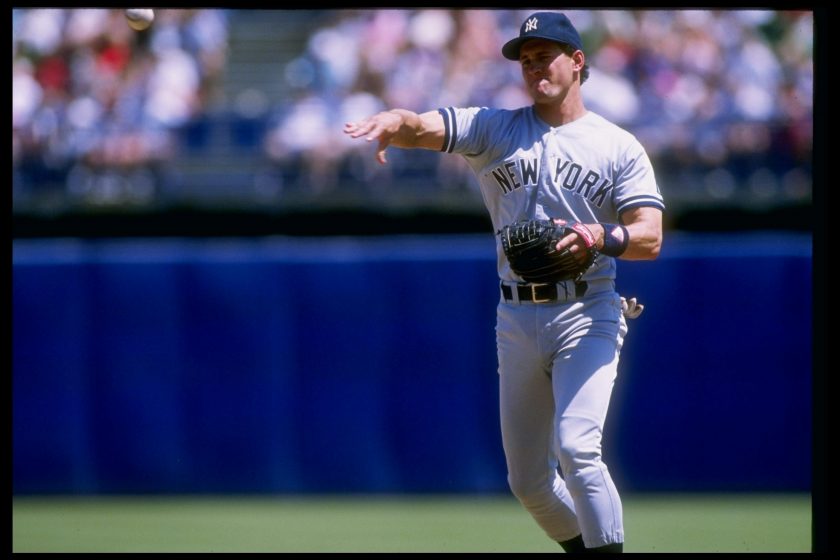
Some New York Yankees fans may have forgotten how well these players performed in pinstripes over the years.
[sc name=”josh-benjamin-banner” ]The New York Yankees have had a ton of players walk through Yankee Stadium’s hallowed halls.
It truly is fascinating. Going back through history, so many notable and even Hall of Fame players played for the Yankees. Even if they only played in a handful of games, their name still exists in the team’s eternal history.
But with the honor of wearing the pinstripes also comes a sacrifice. The Yankees have existed in some fashion for over a century. This means for one great Yankee we as fans remember, we almost certainly forget ten or more former Bronx Bombers.
Today, however, will be different.
Yes, Yankees fans, today is the day for the underdogs. Today, we get a chance to look back on one or more players who were popular in the past, but have since been lost in time.
Thus, as the season is still postponed, let’s do another deep dive and build the New York Yankees’ All-Obscure team.
Catcher: Rick Cerone
Yankees Tenure: 1980-1984, 1987, 1990
Rick Cerone came to the Yankees under less than ideal circumstances. Fan favorite, former AL MVP, and former Yankee captain Thurman Munson had tragically died in a plane crash the previous season. No matter who the new backstop would be in 1980, they would have King Kong-sized cleats to fill.
After being acquired from the Toronto Blue Jays for popular first baseman Chris Chambliss, Cerone stepped up. The New Jersey native hit .277 with 14 home runs and 85 RBI en route to finishing seventh in MVP voting. Cerone would then spend the next four years in and out of the starting lineup before being traded to the Atlanta Braves.
Cerone would return to the Yankees two more times as a free agent in 1987 and 1990 but only as a backup. He retired after the 1992 season and was then a broadcaster for a few years. Then, in 1998, Cerone founded the now-defunct Newark Bears of the independent Atlantic League, selling the team in 2003.
Rick Cerone was not a star player, but he still stepped up for the New York Yankees when the fans and team needed him most. For that, he gets his due recognition.
First base: Joe Pepitone

Yankees Tenure: 1962-1969
Joe Pepitone literally lived the dream early in his career. The Brooklyn native was signed out of high school by the Bronx Bombers in 1958. Four years later, he was backing up Bill “Moose” Skowron at first base.
Pepitone became the starter and a fan favorite in 1963. He could hit for power and was a slick fielder. He hit .252 with 166 homers while in pinstripes, and was also a three-time All-Star with three Gold Gloves. Despite slugging 27 homers in 1969, he was traded to the Houston Astros as his price tag also rose.
Pepitone played for four more years in MLB and also had a brief stint in Japan before hanging up his cleats in 1973.
Retirement wasn’t kind to Pepitone early. He was briefly the Yankees’ hitting coach but also got into trouble off the field. In 1988, he was jailed on drug charges after being arrested for possession in 1985.
Thankfully, Pepitone got it together and served in the Yankees’ front office in the ’90s, taking home World Series rings in 1998 and 1999. He was also a fixture at Old Timers’ Day for years.
Simply put, even though he wasn’t on some very good teams, there was a time when Pepitone embodied everything about the New York Yankees.
Second base: Steve Sax

Yankees Tenure: 1989-1991
Steve Sax wasn’t a Yankee for long, but made his time in pinstripes count. After winning a World Series with the Los Angeles Dodgers in 1988, he signed a three-year deal to move to New York.
Sax was, to be blunt, as advertised. He hit .294 over the life of the contract and stole 117 bases. Sax was also a two-time All-Star. Defensively, Sax was kind of a surprise. Keep in mind, this is someone who once committed 73 errors over a three-year stretch in Los Angeles thanks to yips. As a Yankee, however, Sax only committed 27 errors.
But the highlight of Sax’s Yankees tenure was not anything he did on the field. In fact, New York never won more than 74 games with him on the team. Rather, Sax’s best Yankees moment came when he and teammate Don Mattingly guest-starred on an episode of The Simpsons.
Unfortunately, by the time the episode aired in February 1992, Sax had been traded to the Chicago White Sox. Still, as far as obscure New York Yankees go, Sax is more than deserving of this spot.
Shortstop: Frankie Crosetti
Yankees Tenure: 1932-1948
In baseball’s early days, being a good shortstop didn’t usually mean being good with the bat. So long as someone could field the position well and wasn’t useless at the plate, they had a job.
Frankie “Crow” Crosetti wasn’t particularly great at either, especially in the field. For his career, he made 402 errors at shortstop. As a hitter, he was only a .245 career hitter.
And yet, Crosetti managed to carve out a 17-year career with the New York Yankees. This is because despite his .245 lifetime batting average, Crosetti’s career OBP stands at .341. He just had a knack for getting on base. The two-time All-Star led the majors in being hit by a pitch for five years in a row.
Throw in six World Series rings, and Crosetti is the perfect shortstop for this team.
Third base: Red Rolfe
Yankees Tenure: 1931, 1934-1942
Here we have another throwback, and this one might astound you. A Dartmouth grad and career Yankee, Rolfe appeared in a single game in 1931 before returning to the minors for two more years. He returned to the Bronx in 1934 and became an important member of the lineup.
Though overshadowed by Lou Gehrig and Joe DiMaggio, Rolfe was actually a solid contributor at the plate too. He batted over .300 four times and led the league in runs scored, hits, and doubles in 1939. Rolfe was also a four-time All-Star and took home five rings with the Yankees. He also had a fantastic eye, striking out just 335 times in 5,406 career plate appearances.
Unfortunately for Rolfe, the gap power which defined his career disappeared early and he retired at just 33 years old. He then coached at Yale for a few years before going on to manage the Detroit Tigers. Finally, he returned to Dartmouth and served as the school’s athletic director before his death in 1969.
Not many know his name, but it’s hard to find a better obscure New York Yankees third baseman than Red Rolfe.
Left field: Charlie Keller
Yankees Tenure: 1939-1943, 1945-1949, 1952
Next up we have one of Rolfe’s contemporaries in Charlie Keller, who also played well despite being surrounded by star players. The southpaw-swinging outfielder debuted in 1939 and hit an impressive .334. Keller would then go on to hit .295 for the first five years of his career before serving a year with the Merchant Marines.
Keller returned to the New York Yankees in 1945 and had the third 30-homer season of his career in 1946. Chronic back problems then robbed him of his power and relegated him to backup duty for the rest of his career. The Yankees released him in 1950 and he spent two years with the Tigers before a brief two-game stint with New York again in 1952. Keller then retired.
But when he was healthy, Keller was borderline great. He led the AL in walks twice and has three World Series rings to his name. In 4,604 career plate appearances, he struck out just 499 times.
Perhaps if he had stayed healthy, Charlie Keller would have enjoyed a borderline Hall of Fame career.
Center field: Earle Combs
Yankees Tenure: 1924-1935
For someone who was part of the 1927 Murderers’ Row team, Combs doesn’t get nearly enough credit. Not only did he win three World Series rings in pinstripes, but he is also a Hall of Famer.
This is because in his prime, Combs was an absolute wizard with the bat. Not only did he hit .356 in 1927, but he led the American League in hits while leading the majors in plate appearances and triples. Speaking of triples, Combs led the AL in the category three times.
A career Yankee, Combs was also a .325 career hitter with a phenomenal eye. In 6,514 plate appearances, he struck out just 278 times. Combs also held his own in the outfield, committing just 88 errors in center field over 12 years.
Sadly for Combs, his career literally hit a wall in July 1934. Chasing down a fly ball in St. Louis, he hit the wall and fractured his skull while also injuring his shoulder and knee. Combs, now 35, tried coming back in 1935 before getting injured again. The injury combined with DiMaggio’s emergence led him to retire.
Still, Combs was the leadoff man for Murderers’ Row. Before even thinking about Babe Ruth and Lou Gehrig, opposing pitchers had to go through him. He didn’t make it easy for them, so Combs’ spot here is well-earned.
Right field: Hank Bauer
Yankees Tenure: 1948-1959
Bauer arrived in New York at the perfect time. He had a cup of coffee with the Yankees in 1948 before becoming a full-time player the year after. 1949 also just happened to be when the New York Yankees would win the first of five World Series in a row.
Sharing the field with Yogi Berra and later Mickey Mantle, Bauer became a reliable member of the lineup. The three-time All-Star was a .278 career hitter in pinstripes and defined consistency. He was never a superstar, nor did he lead the league in anything ever, but Bauer just had a knack for playing the game well.
Bauer also to this day owns the record for longest World Series hitting streak, at 17 games. His career highlight came in Game 6 of the 1951 series, when his three-run triple broke a 1-1 tie. Bauer also caught the final out to make the Yankees the champs.
But like every player, Bauer eventually got old and was traded to the Kansas City Athletics in 1959. In return, the Yankees received Roger Maris, who would go on achieve his own greatness in New York.
Bauer, meanwhile, played two more years with the Athletics before retiring and becoming the team’s manager. He eventually moved on to Baltimore, where he led the Orioles to their first World Series title in 1966.
Starting pitcher: Red Ruffing
Yankees Tenure: 1930-1942, 1945-1946
In the prime of his career, Red Ruffing was the definitive workhorse. He was 25 when the Yankees acquired him from the Boston Red Sox in 1930 and didn’t have much going for him. He had a combined 47 losses over the previous two years and owned a 4.61 ERA for his career. Surely, the Yankees were crazy to trade for him, right?
Critics soon ate their words faster than Adam Richman at a pie-eating contest. Working with manager Bob Shawkey, Ruffing changed his delivery and went 15-5 for the rest of the year following the trade. Six All-Star selections and six World Series rings later, Red Ruffing retired from a 22-year career with 273 career wins and a 3.80 ERA.
But as was said earlier, Ruffing was an absolute horse. He logged over 200 innings ten times while wearing the pinstripes. In 1945, after his 40th birthday got him discharged from the military, Ruffing returned to New York and posted a 2.89 ERA in 11 starts. He returned again in 1946 and had a 1.77 ERA through eight starts before going down with an injury. He retired at age 42 after spending the following year with the Chicago White Sox.
It took him time to hit his stride, but Ruffing’s work speaks for itself. As the winningest right-handed pitcher in New York Yankees history, he deserves his spot here.
Relief pitcher: Johnny Murphy
Yankees Tenure: 1932, 1934-1943, 1946
In a time when saves were really just an extra statistic for pitchers, Johnny Murphy was ahead of his time. The native New Yorker and Fordham graduate signed with the New York Yankees right out of college. He quickly moved to the bullpen after starting 20 of 40 games played as a rookie in 1934, and the rest is history.
Murphy made three All-Star teams and led the AL in saves four times, the most being a career-high 19 in 1939. He was never the absolute shutdown closer fans expect of the role today, but was rather an arm who could do it all. Be it as a starter, mop-up guy, or general relief work, Murphy was reliable as could be.
Two years of military service interrupted his career, but he still returned to the Yankees at age 37 in 1946 and posted a 3.40 ERA in 28 games. Murphy then spent a year with the Red Sox before retiring.
Johnny Murphy isn’t well-known, but he was the first Yankee to break the 100-save mark. For this team, he is the perfect man to represent the bullpen.
Josh Benjamin has been a staff writer at ESNY since 2018. He has had opinions about everything, especially the Yankees and Knicks. He co-hosts the “Bleacher Creatures” podcast and is always looking for new pieces of sports history to uncover, usually with a Yankee Tavern chicken parm sub in hand.

